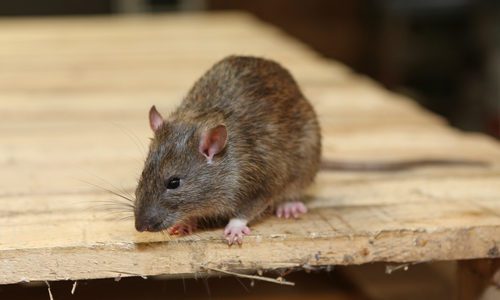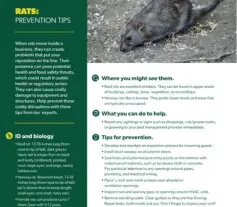
One resilient rodent you don’t want to face is the Rat. Once they’ve found a way into your home or business, they can be difficult to remove without professional help. They contaminate food, chew through wires and insulation, and leave behind messes that put your health at risk. That’s timely pest control for rats is essential.
At Gregory Pest Control, we provide complete rat solutions for homes and commercial properties. Whether you’re searching for “rat removal near me” or want to know if you need a rat exterminator, our team is here to inspect, treat, and protect your property from the risks rats bring.
Rat Removal in North and South Carolina
In North and South Carolina, rats are a common issue in urban and rural areas. Warm weather and dense neighborhoods offer them shelter, food, water, everything they need to settle in. Once they’ve established themselves, they rarely leave without help.
Our rat control services are designed for the unique conditions across North and South Carolina. We understand how rats behave, how they enter buildings, and what makes certain homes or businesses more attractive to them. Whether you manage a restaurant in Charleston or a house in Greenville, our solutions are built to match your space.
Rat infestations look different from one location to another. That’s why we never apply a one-size-fits-all approach. Your pest control technician will strategize the best placement of traps and what methods to use in your South Carolina home or business. Our team at Gregory Pest Solutions can identify how rats got in and help you prevent future invasions with full residential rat control services.
Signs of Rats in your home
Rats are primarily active at night, which makes spotting them difficult. However, they leave behind enough evidence to know something’s wrong. If you’ve been hearing scratching noises after dark, noticing gnaw marks, or finding small droppings, these are strong signs of rats in your house.
Where You Might See Rats
Rats often hide in attics, crawl spaces, basements, or behind walls. They choose these spots because they’re quiet, dark, and out of reach. You might also find signs in garages, pantries, under sinks, or near your water heater. Chewed packaging or damaged drywall may suggest they’ve been passing through. Outdoors, rats nest under decks, behind sheds, or near trash bins. Any structure that provides cover and has nearby food is fair game. If you store pet food in your garage or leave garbage unsecured, you will likely attract them without realizing it.
The Difference Between Rats and Mice
While both rats and mice are rodents, they behave and look quite different. Rats are larger, with thicker bodies, blunt snouts, and long, scaly tails, while mice are smaller, with pointed noses and thinner tails.
Rats tend to be more cautious and avoid traps if they sense danger, While mice are curious and will often explore new areas quickly. Knowing which pest you’re dealing with is vital to get the best pest control solution.
Can Rats Hurt Me?
Rats don’t usually attack people, but they still pose health risks. Their urine, droppings, and saliva contaminate surfaces and food. Some rats carry parasites like fleas or ticks and spread bacteria through their waste. This contamination can cause serious problems in enclosed areas like attics or kitchens.
They’re also destructive. Rats chew on wires, which can cause electrical shorts or fires. Their constant gnawing also damages insulation, plumbing lines, and structural wood. Rat teeth constantly grow, so they need things to chew on so their teeth don’t grow out of control. They’ll chew on nearly anything, destroying home furniture or structure.
Rats have been known to spread these diseases, including:
- Leptospirosis (a bacterial disease)
- Rat-bite fever (transmitted through bites and scratches)
- Salmonellosis (from drinking or consuming water or food that rat populations have contaminated)
Rat Inspection
A thorough rat inspection is the first step in solving a rat problem. Our technicians search for access points, nests, signs of feeding, and potential food or water sources. We check attics, crawl spaces, garages, and basements for evidence that might not be obvious to the untrained eye.
Inspections are important because they reveal how rats get in. Sealing these entry points, whether a gap in siding, a loose crawl space vent, or an open drain, is key to stopping future infestations.
Why Are There Rats in My Home or Business?
Rats move in because your home or business provides the perfect mix of shelter and food to support their colony. They seek seclusion, warmth, and accessible food. To keep rats out, you need to watch for these conditions and check all the corners and hidden spots where they might nest.
In their escape from the elements to find food, rats use their excellent noses to smell your dinner well outside your walls. They’re also experts in discovering small openings and finding their way in. Because rats are social animals, once one finds a way in, it will likely invite others. They prefer dark, quiet places and often settle in attics, basements, or between walls.
Rats are also capable climbers. When inspecting for potential entry points, look both above and below eye level. Rats can fit through holes as small as a coin, so don’t overlook even the smallest opening.

Rat: Prevention Tips
Prevention plays a significant role in long-term rat control. Without it, even the best removal efforts may only temporarily solve the problem. Rats will return unless the environment changes.
Download our Rat Prevention Tips PDF for expert advice on how to keep rat infestations out of your property.
Rat Prevention Tips
Rat prevention (like most pest prevention) is best done through pest exclusion. Exclusion involves sealing any potential holes, cracks, or areas of your home that open more than half an inch. Other tips to consider include:
- Patch holes in screens, weather-strip doors, and caulk cracks.
- Stay on top of cleanliness (both inside and outside) to minimize the potential food and water sources available to rats.
- Clean up spills immediately and keep food sealed.
- Eliminate clutter in basements and outdoor buildings.
- Trim outdoor home vegetation, especially on the perimeter of buildings.
- Remove any potential hiding places (such as wood piles, clutter, trash piles, or debris).
- Do not overwater mulched areas around a structure.
- Make sure that plumbing p-traps are filled with water to ensure they are sealed.
- Use sodium vapor bulbs or LED lights of greater than 550 nm.
- Reduce humidity by using a dehumidifier.
You can also attempt to catch rats using traps – but if your problem is bigger than one or two rats, your best option is to contact a professional pest removal company like Gregory Pest Solutions.
Can Rats Climb Walls?
Yes, many species of rats can climb, in fact, they’re great at it. They use textured surfaces like brick, siding, or pipes to reach higher ground. That means your attic, roofline, or upper vents aren’t off-limits. This is why thorough inspections always include a look at high-access points and roofline gaps. Understanding their climbing ability helps homeowners and professionals prioritize these areas during prevention and exclusion efforts to keep rats out effectively.
What Do Rats Eat?
Rats eat almost anything. They consume grains, nuts, insects, and fruits in the wild. In homes, they’ll chew through packaging to reach cereal, pet food, and pantry items. They also feed on grease buildup in kitchens and spilled drink residue.
Their flexibility makes pest control for rats more difficult. You can’t simply hide food; they’ll find it if it’s not sealed correctly. And they’ll return to known food sources night after night. That’s why reducing food access is one of the most essential steps in rat prevention.
Sealing holes, storing food in airtight containers, and securing trash are good first steps to reduce their access to food. However, to prevent rats in the long term, you need to address both entry points and sources that attract them.
Gregory Pest Solutions for Rats
Hire Gregory Pest Solutions today, and you won’t just get general pest control; you’ll get a team that understands how rats think and move. We’re not just here to respond to the infestation on your property; we’ll take all the necessary steps to help prevent them from happening again and again.
Our process begins with a thorough rat inspection. We design a treatment plan from there, including traps, bait stations, or exclusion materials. But our work doesn’t stop after removal. We provide follow-up services and prevention tips that strengthen your property’s defenses.
Whether you’re looking for a rat exterminator or need help identifying the type of pest causing trouble, our team is ready. We serve both homes and businesses with solutions that work in real-world settings. Our services are discreet, efficient, and designed around your space, not just textbook advice.
Get a Quote Today
If you hear scratching noises, find droppings, or spot damage, don’t wait for the problem to grow. Rats breed fast; even a few can become severe infestations within weeks.
Gregory Pest Control offers local, knowledgeable help when you need it. Whether you’re actively dealing with rats or want peace of mind, we’re here with fast service and proven solutions. Contact us today to schedule your inspection and get a plan that works for your property.
Frequently Asked Questions
Do Rats Carry Rabies?
Rats are not known to carry rabies, and transmission from rats to humans is extremely rare. However, they can have other diseases and parasites that pose health risks.#
How Big Can Rats Get?
Adult rats can grow up to 16 inches long, including their tail. Some species, like the Norway rat, are heavier-bodied and can weigh over one pound.
Do Cats Eat Rats?
Some cats will hunt and kill rats, especially if they’re natural hunters. However, relying on a cat for rat control isn’t reliable for addressing an infestation.
What Attracts Rats?
Rats are drawn to food, water, and shelter. Open garbage bins, spilled pet food, compost, and cluttered areas can all attract rats to your home or business.
What Does Rat Poop Look Like?
Rat droppings are dark, spindle-shaped, and typically about half an inch long. They’re often found near food sources, along baseboards, or in hidden areas like cabinets and attics.
